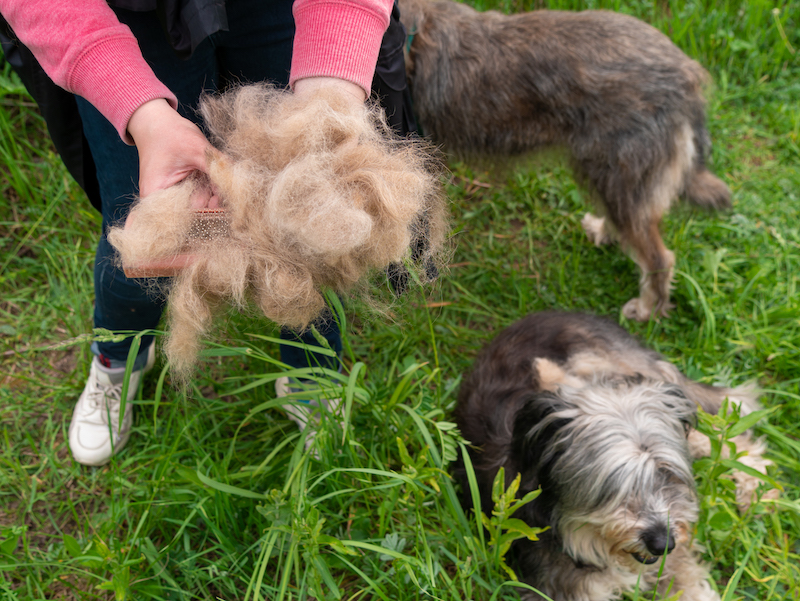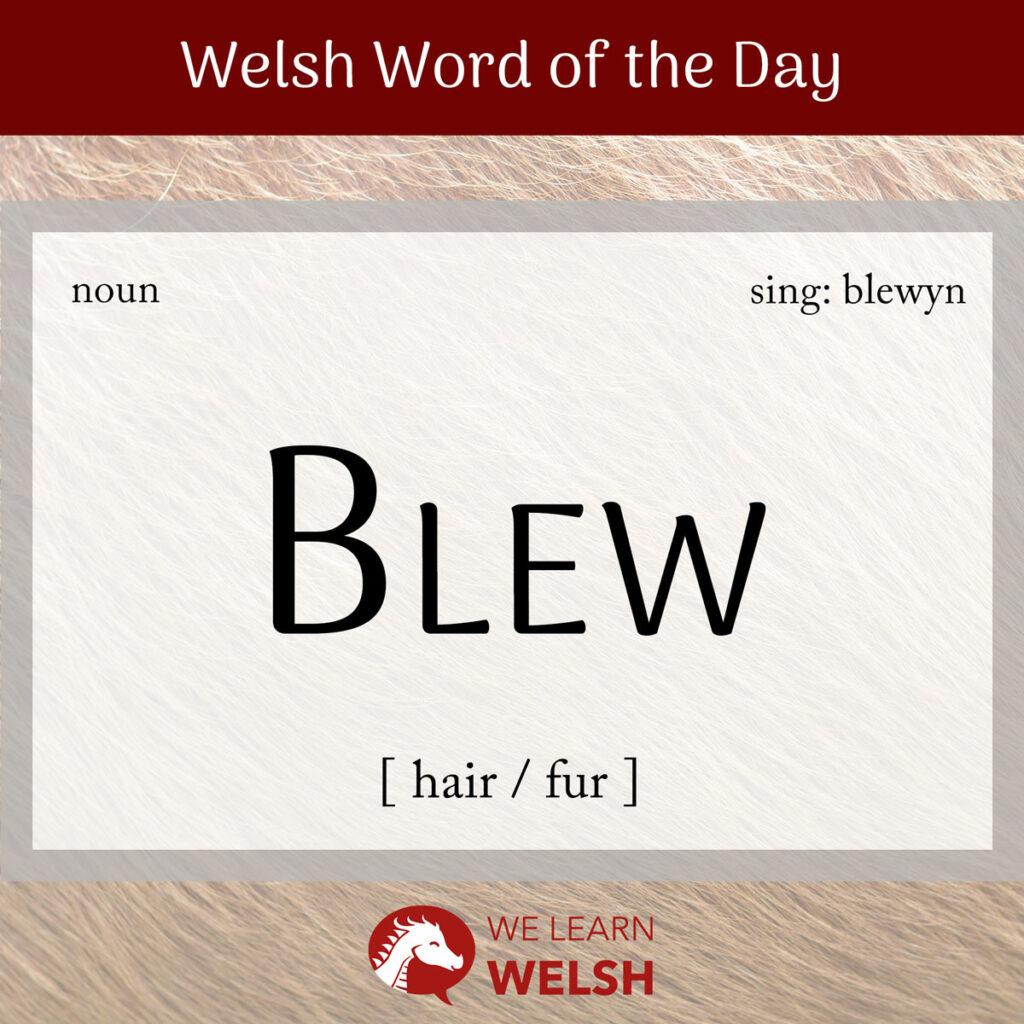When learning body parts in Welsh, you’ll be taught the word gwallt for hair. This is how we talk about hair on our head. However, hair on other parts of the body, or fur on animals, is blew. This is a collective noun, and the singular is blewyn (a hair). You also use blewyn for a singular strand of hair, even if you’re talking about gwallt.
blew
hair / fur
Although blew has cognates in the Brythonic languages – the Cornish bleaw and the Breton blew – it doesn’t have cognates in the other Celtic languages, and its ultimate root is uncertain.
Blew mutates like this:
Soft mutation
flew
Nasal mutation
mlew
Aspirate mutation
N/A
The same mutations are relevant for blewyn, which becomes, for example, dau flewyn (two hairs) or fy mlewyn amrant (my eyelash).
Speaking of blew amrant (eyelashes), let’s look at some of the most common types of blew / blewyn.
- blewyn amrant / blewyn llygaid / amranflewyn = eyelash
- blew’r gên = beard (though this is usually barf)
- manflew = fur / down
- blew’r gesail = armpit hair
- blew cae / blew glas = grass, literally field hair
To gweld blew ei lygaid (to see one’s eyelashes) means to imagine seeing things.
However you use blew, it has synonyms in Welsh that are a more direct translation of their English equivalent. For example, gwallt for hair, ffwr or manflew for fur, or glaswellt for grass. Another botanical usage is blew pigog (spiky hair) which is used for nettle stingers. Blew pysgodyn (literally: fish hairs) is also the term for small fishbones, so it’s truly a very versatile word!
Mae hi’n eillio blew ei choesau.
She’s shaving her leg hair.
Everyone has blew on their corff (body) naturally, but many people prefer to plicio blew (remove their hair). This is done with a rasel (razor) or by cwyro (waxing). But it’s getting more common these days to choose to stay blewog (hairy)! In the South, a particularly hairy man may be jocularly called a blewgi (hairy dog).
On the other hand, for non-human animals, losing one’s blew happens by bwrw blew / bwrw henflew (moulting, literally hitting hair). If you’re describing the blew of a particular kind of anifail (animal), remember to put the species second: blew cath (cat hair), blew gafr (goat hair), blew cwningen (rabbit hair).
A lot of the expressions we use in English about hair actually refer to a singular blewyn (hair), meaning their Welsh equivalents do use blew or blewyn instead of gwallt.
- i’r blewyn = to a hair / precisely
- hollti blew = to split hairs
- trwch blewyn / lled blewyn = a hair’s breadth
And some expressions are different, like esgyrn, croen a blew (bones, skin and hair), which is used in the same way as the English skin and bone.
O, peidiwch â hollti blew nawr.
Oh, don’t split hairs now.

Mamaliaid (mammals) grow blew in order to keep them cynnes (warm). It also acts as a layer of amddiffyniad (protection), and enhances their synhwyrau (senses), among other things.
Aside from our own, humans also make a lot of use of the blew of other animals, utilising it to make fur and felt for dillad (clothes). Sadly, this is often produced in cruel and unethical ways, so many people instead choose to wear ffwr gwneud (fake fur).
Mae gen i gi blewog.
I have a fluffy dog.
So, let’s recap – blew means hair in the context of body hair, a single hair, or an animal’s hair, fur, or bristles. It can also be used to refer to glaswellt (grass) and is used to describe fishbones, too. Gwallt is just for the head hair of humans, although sometimes it’s used for animals that have human-like myngau (manes), like llewod (lions) or ceffylau (horses).
It turns up a lot in idioms, too. Someone who has dim blewyn ar ei dafod (not a hair on his tongue) is straight-talking, and someone who likes to achub y blewyn a cholli’r bwrn (save the hair and lose the whole package) is penny-wise and pound-foolish.
The most unpleasant idiom though has got to be tynnu blewyn o drwyn (to goad). This literally means pulling nose-hairs!

